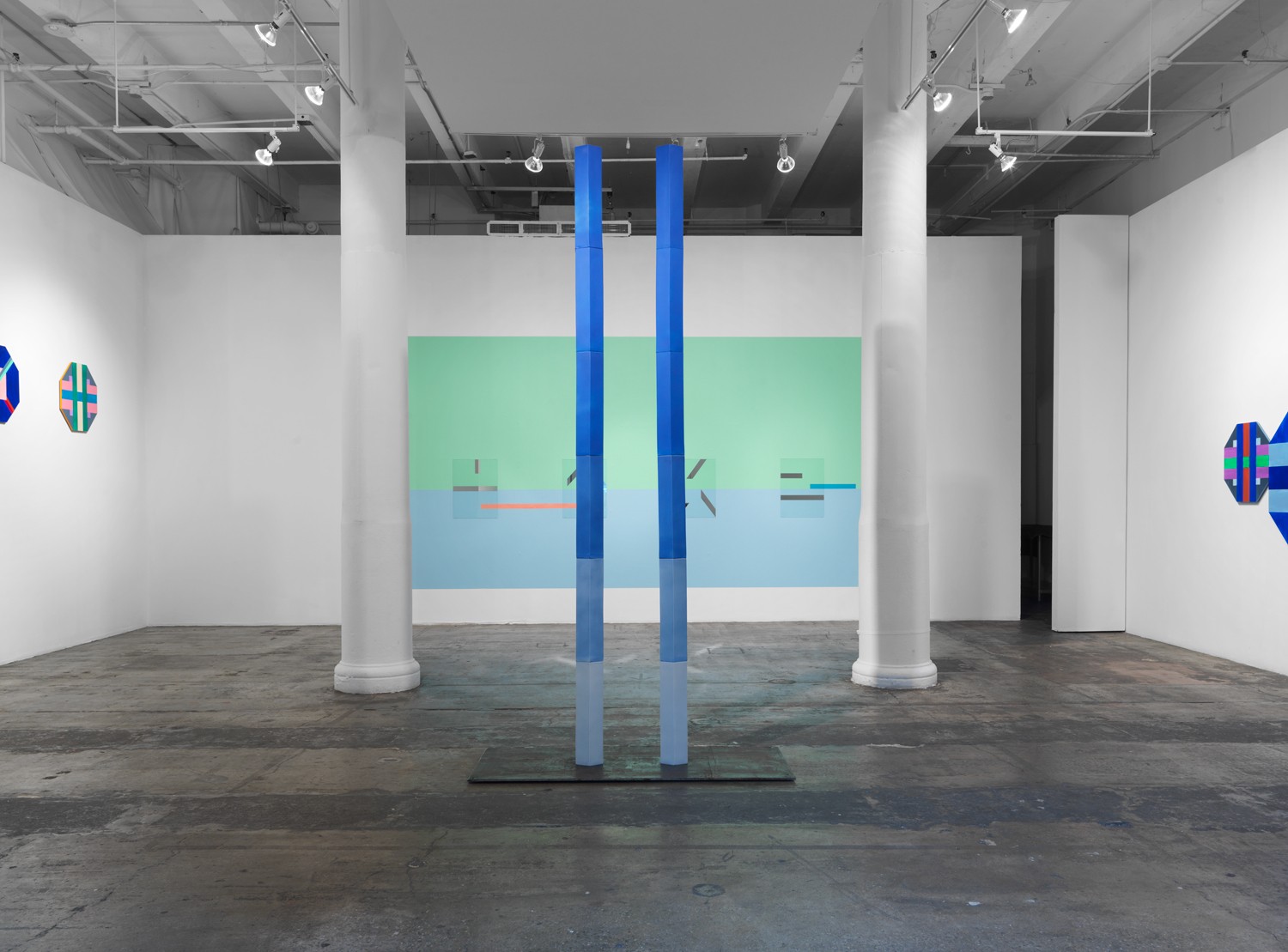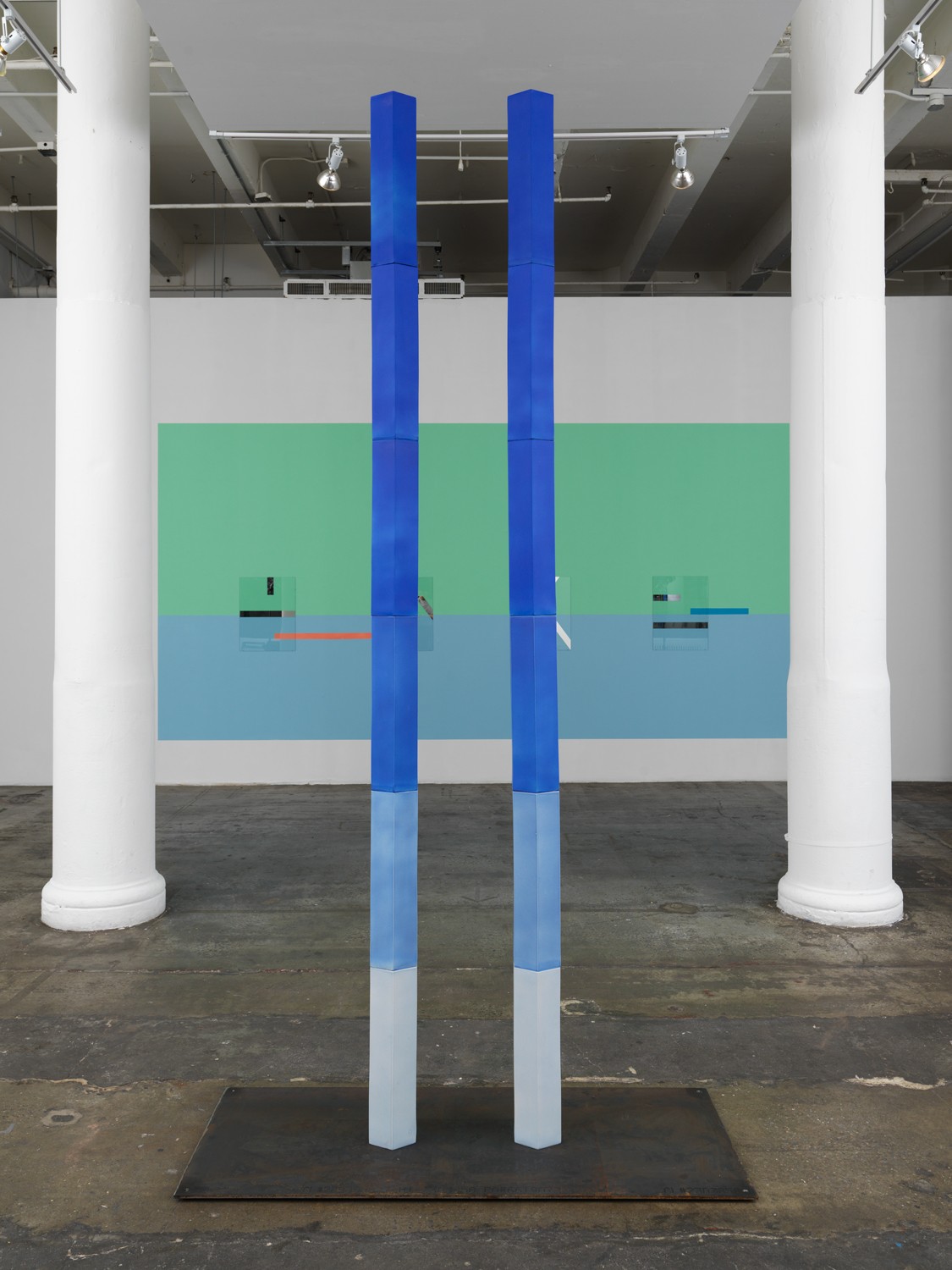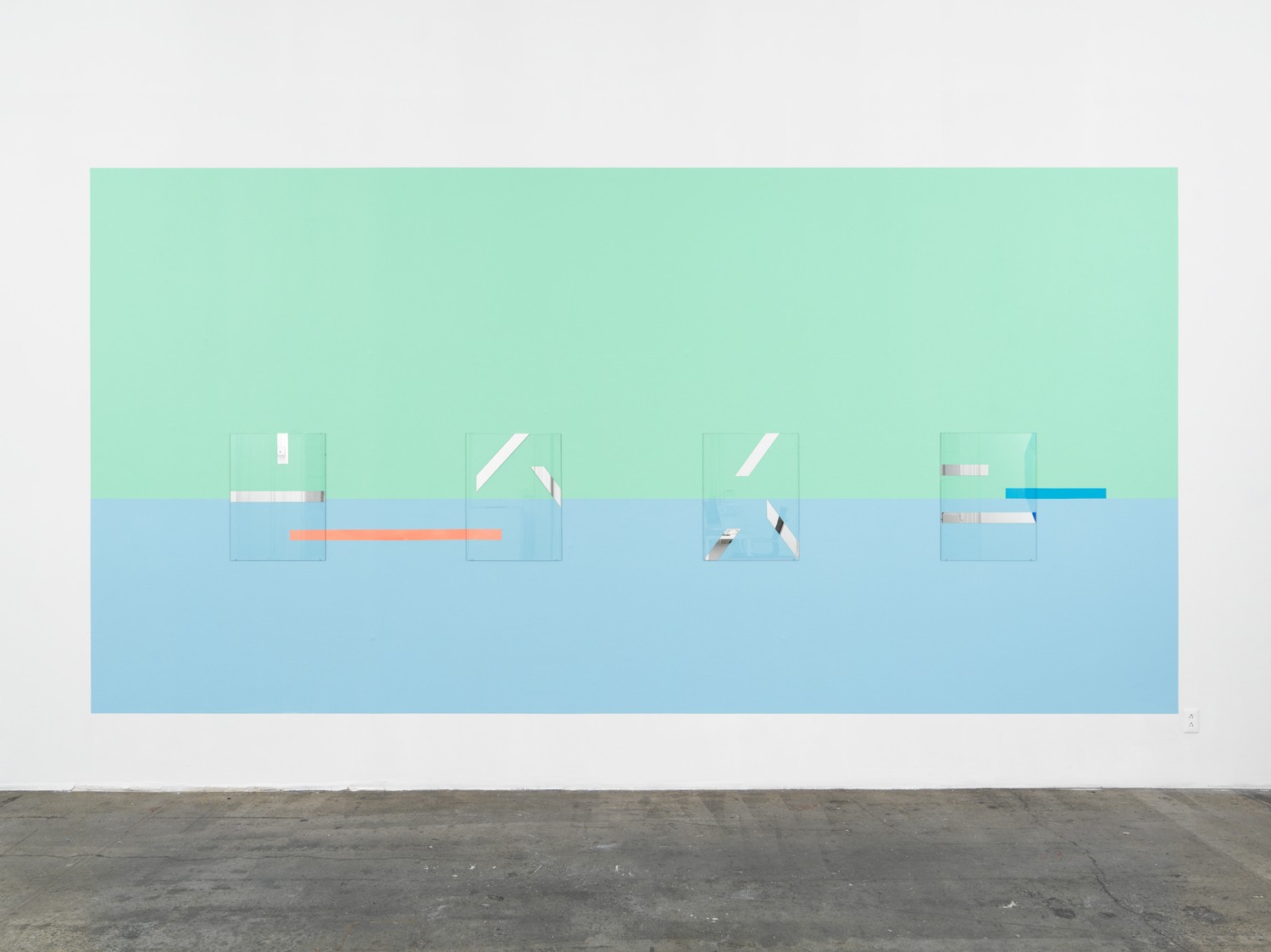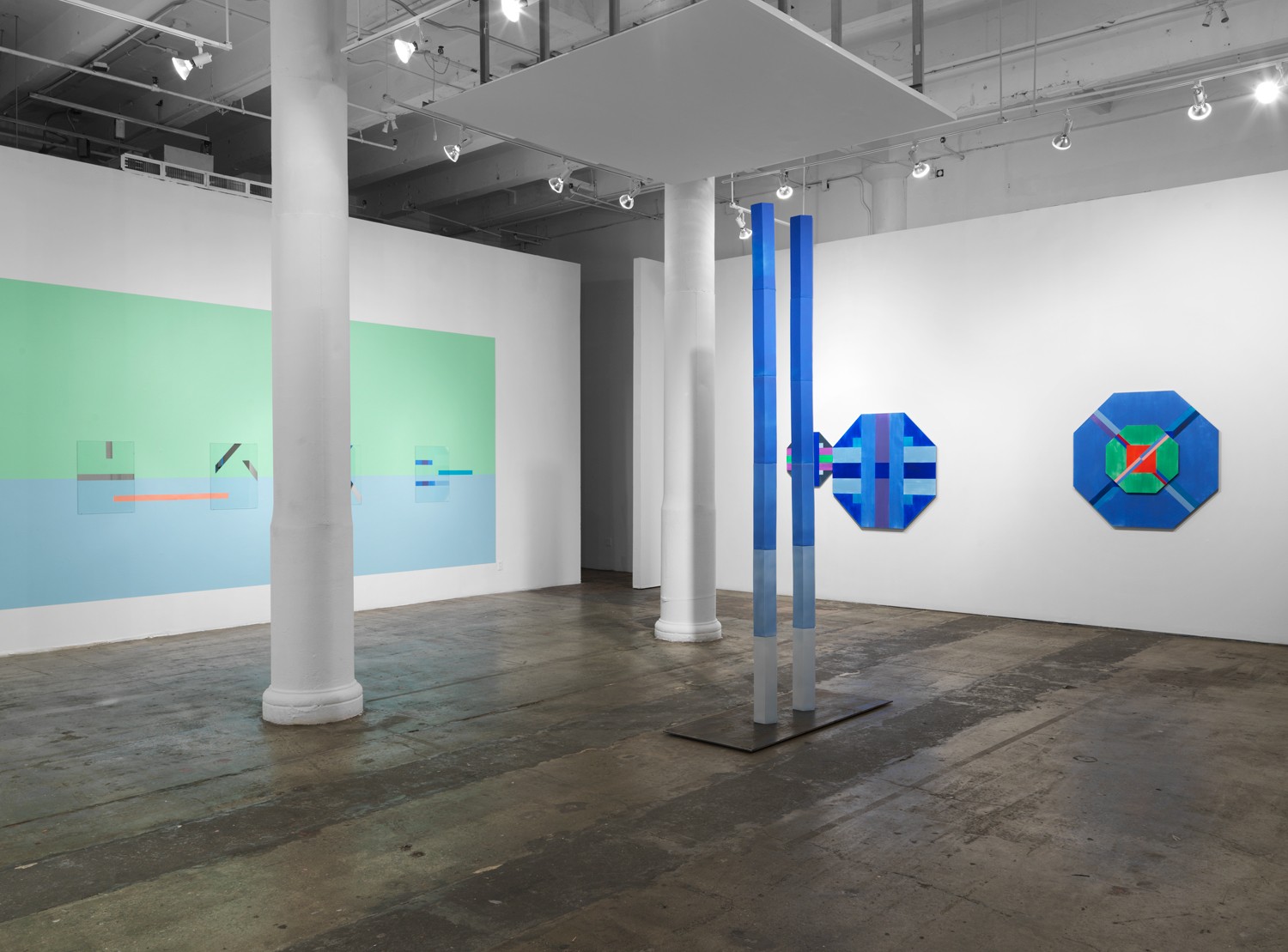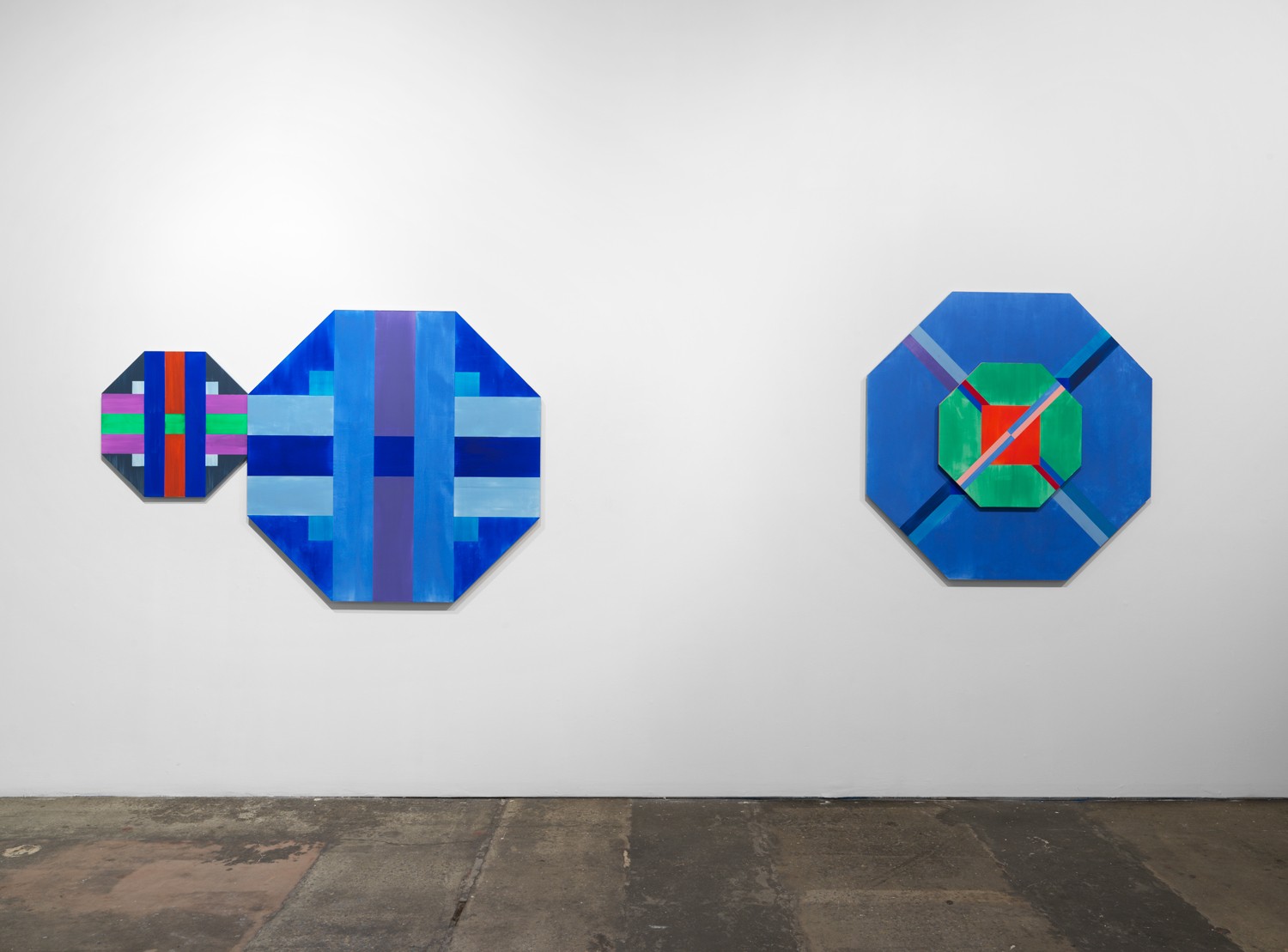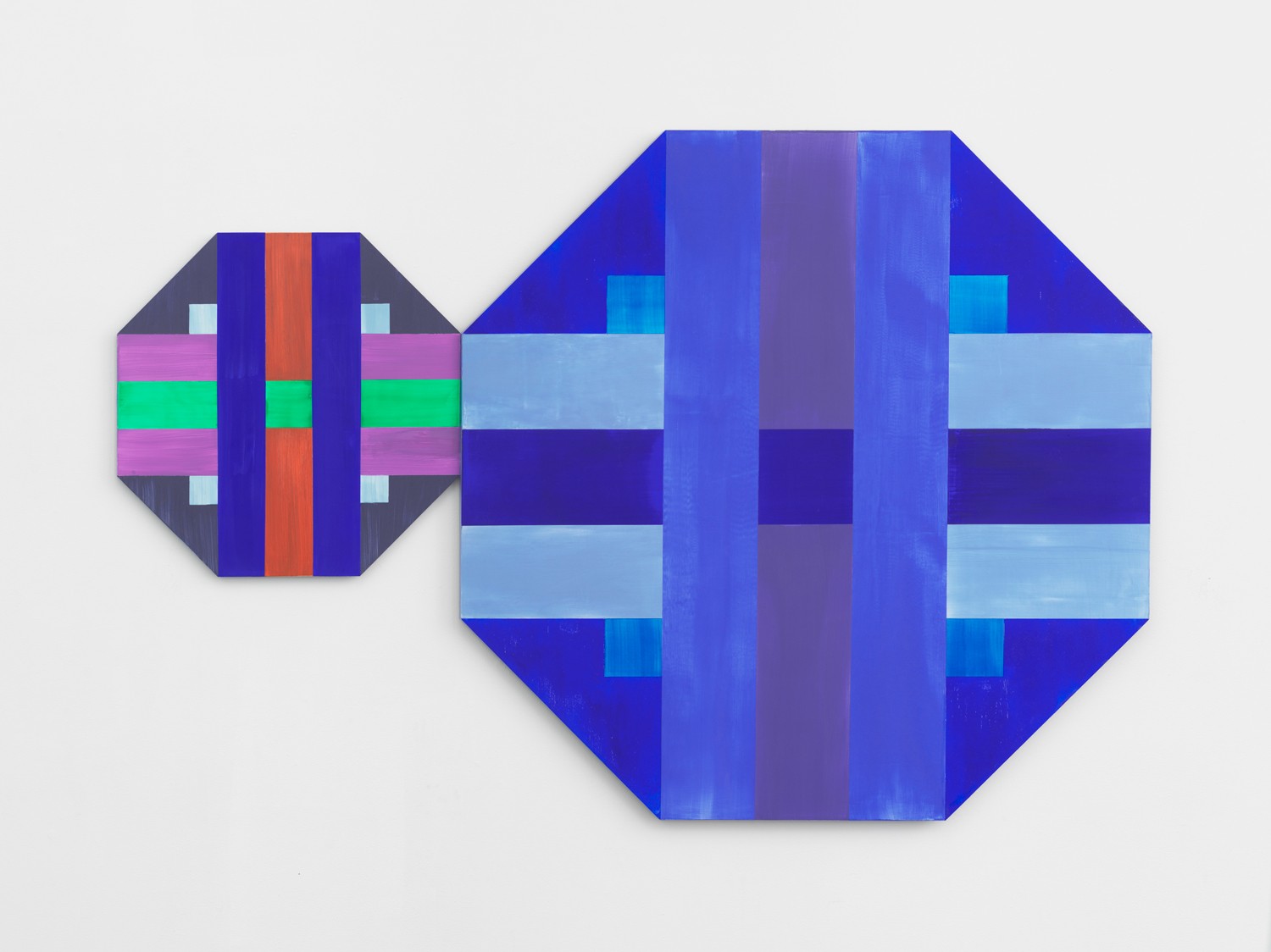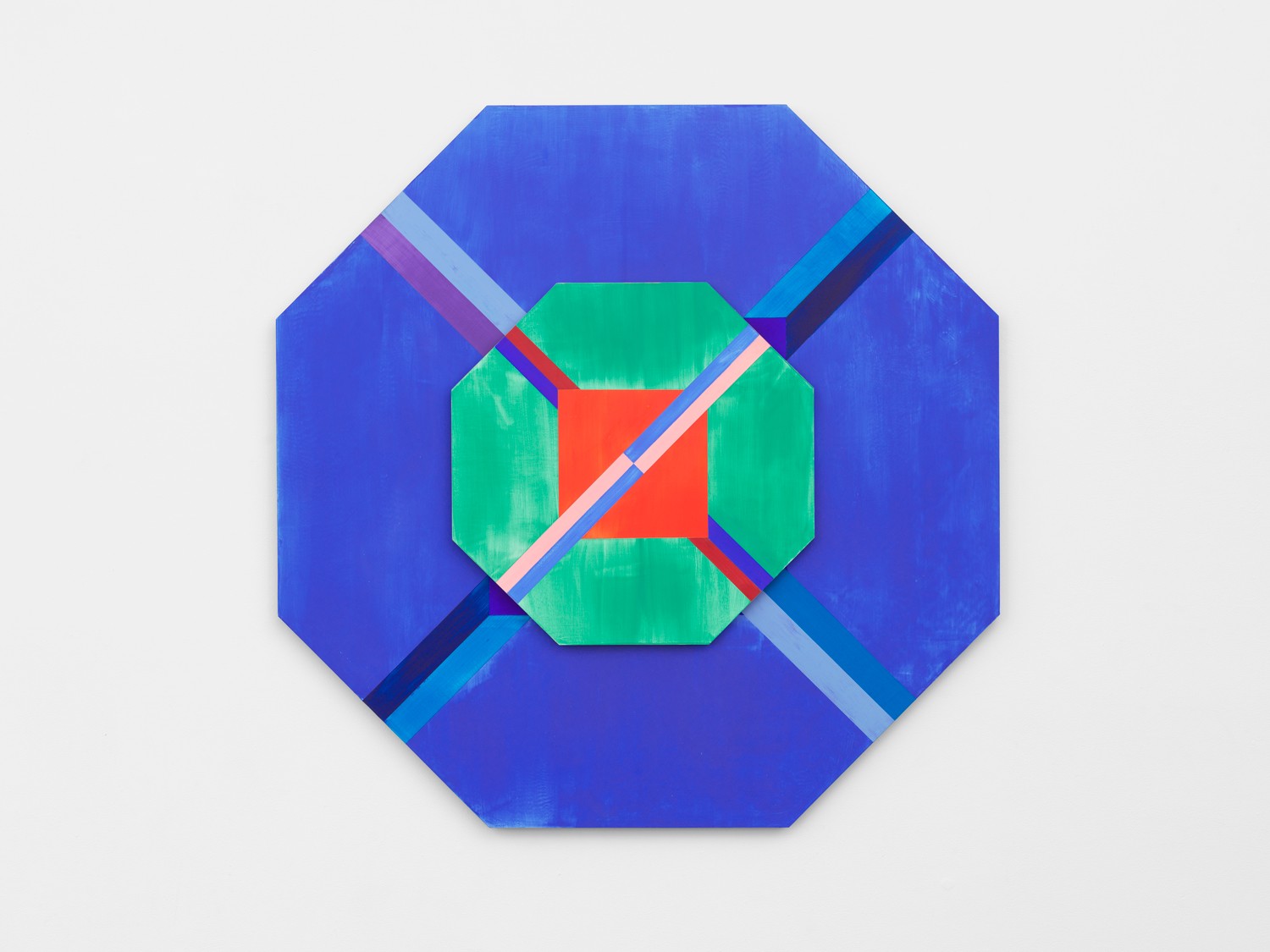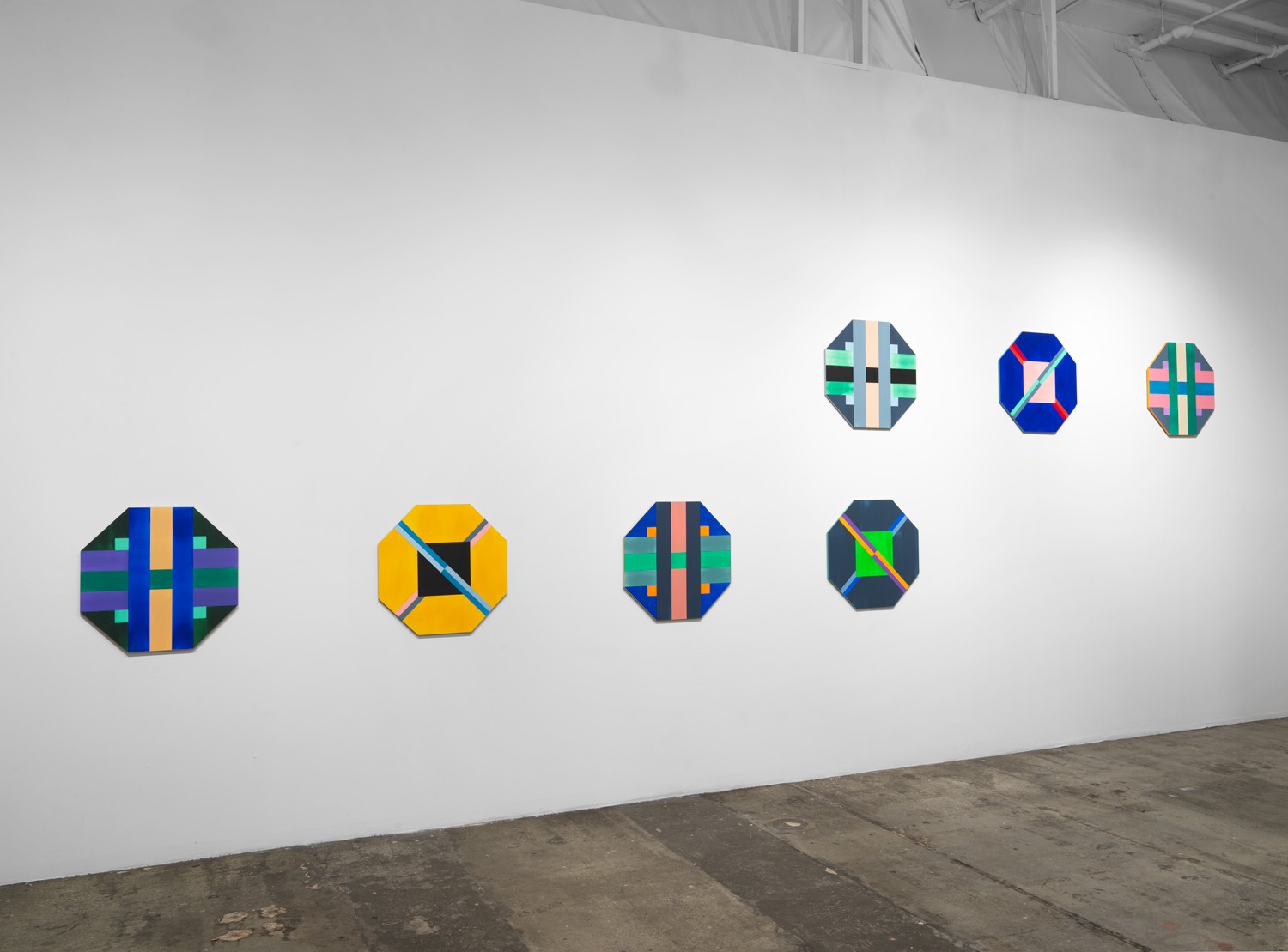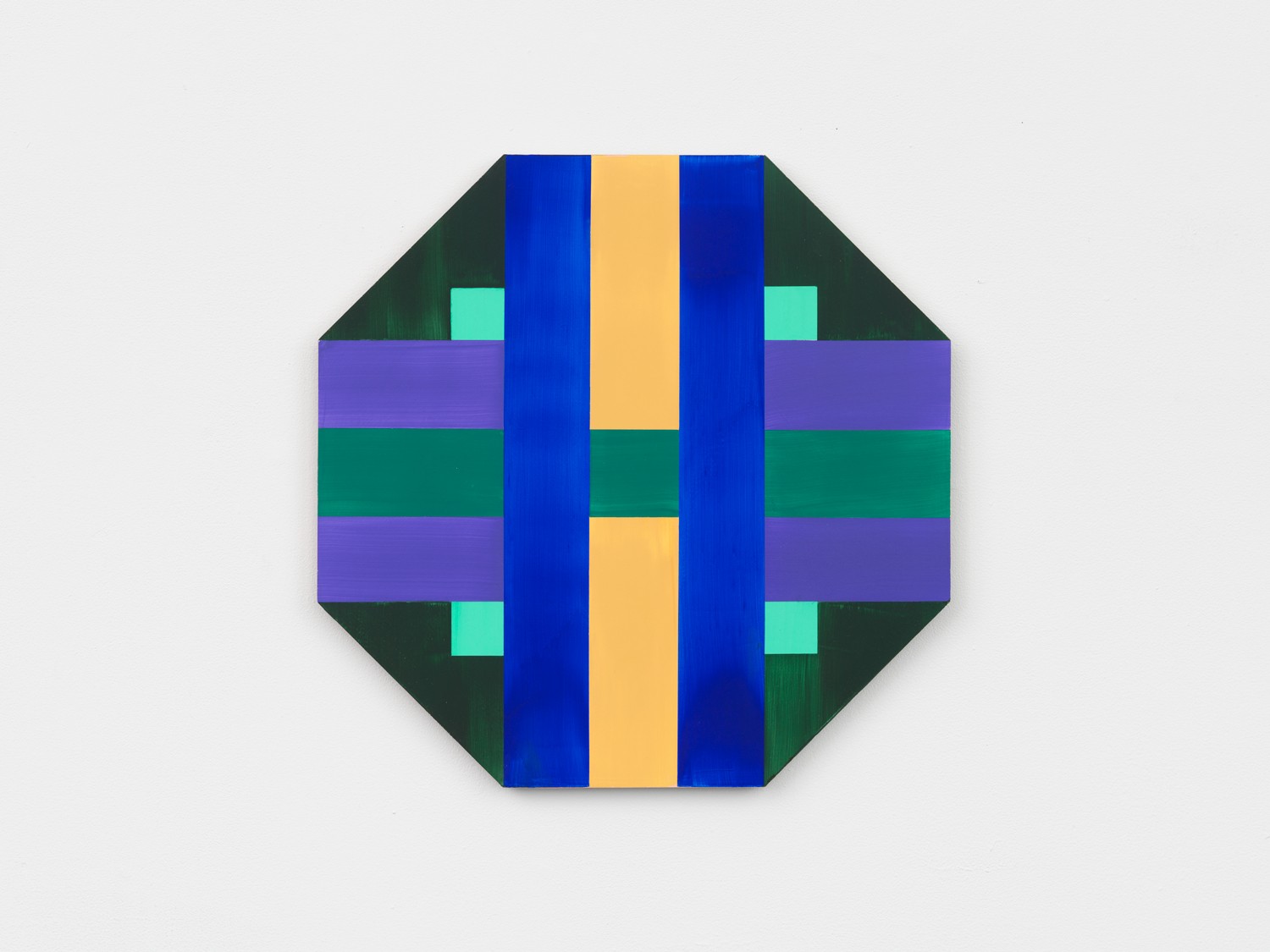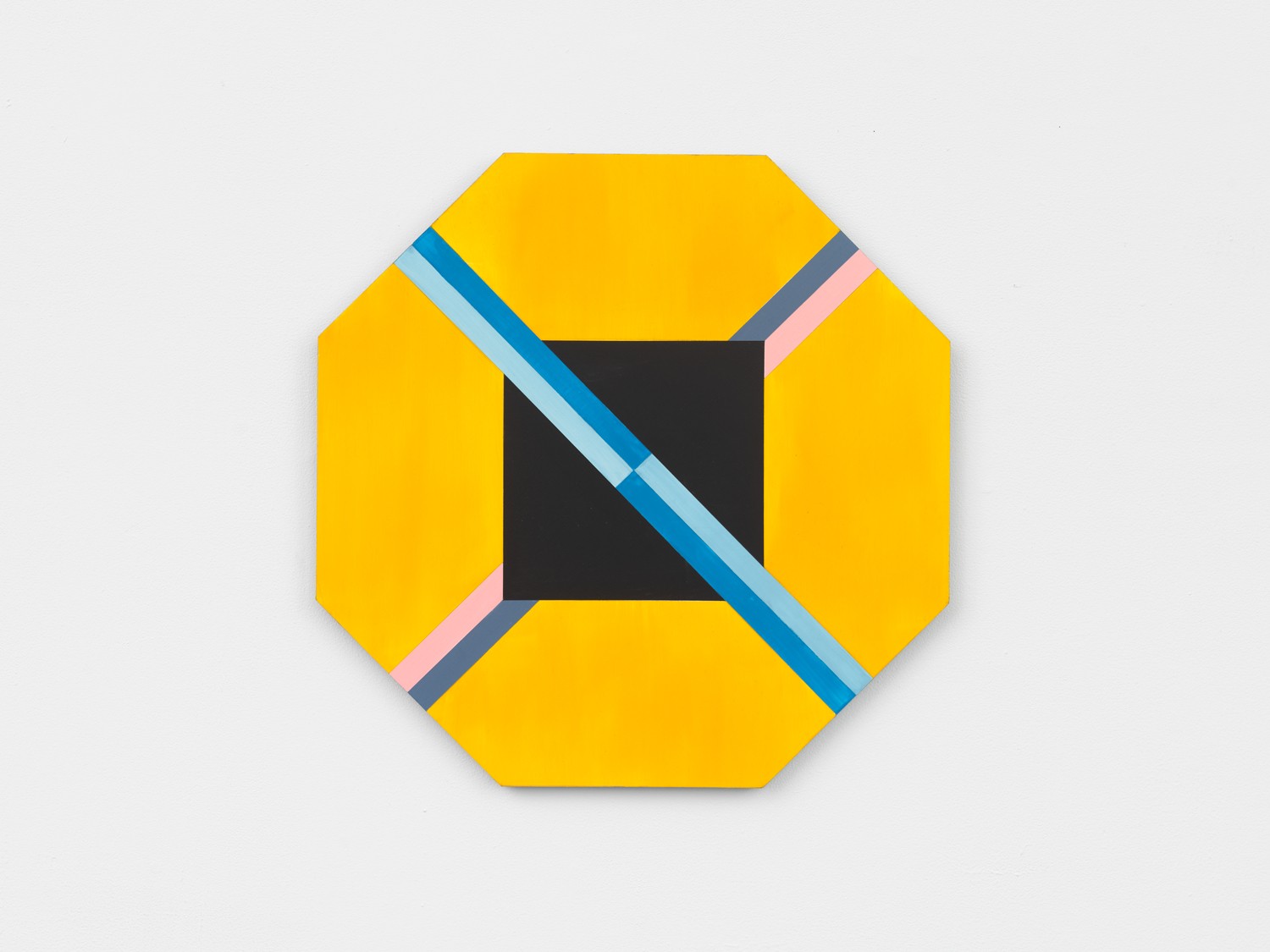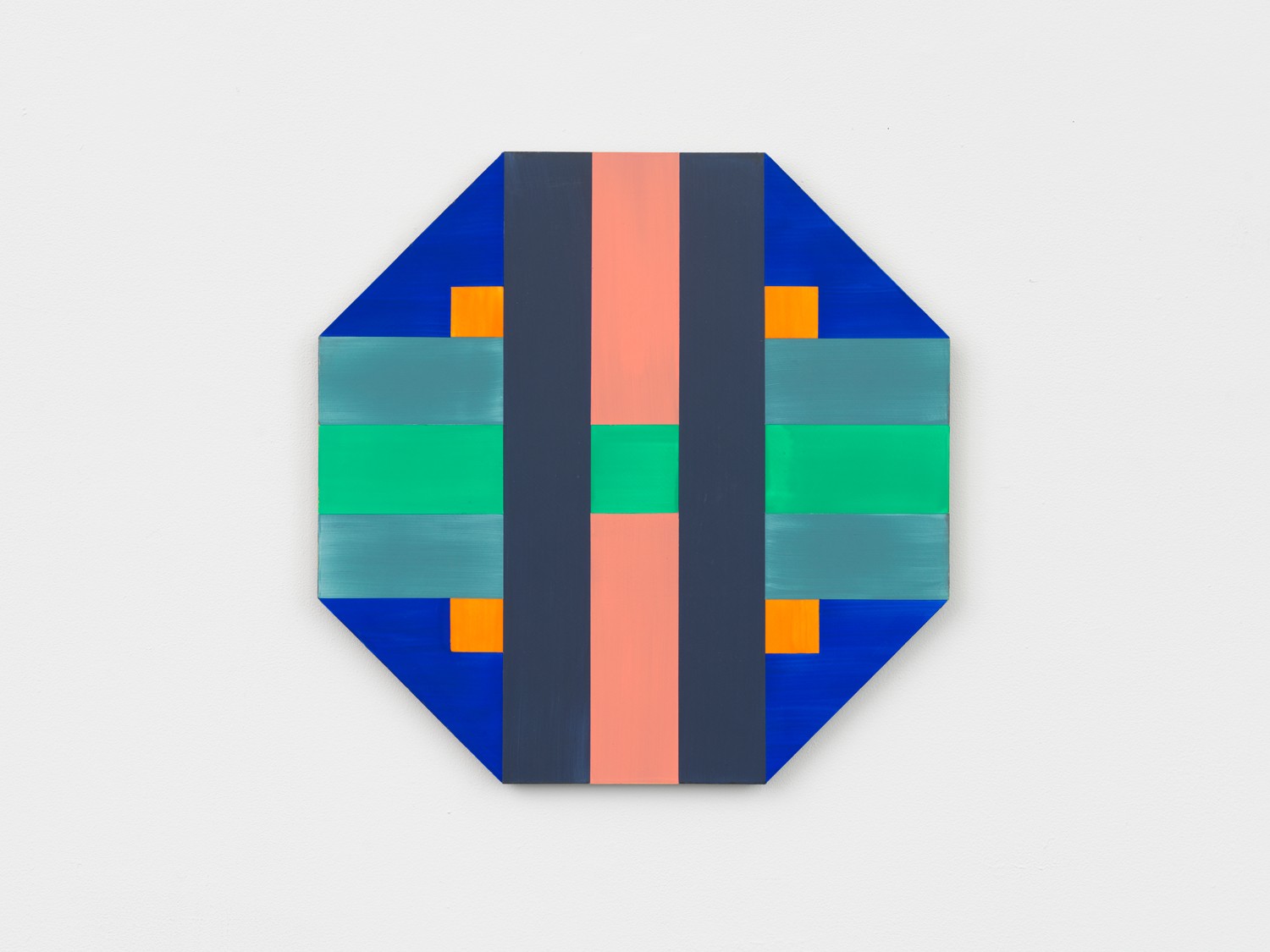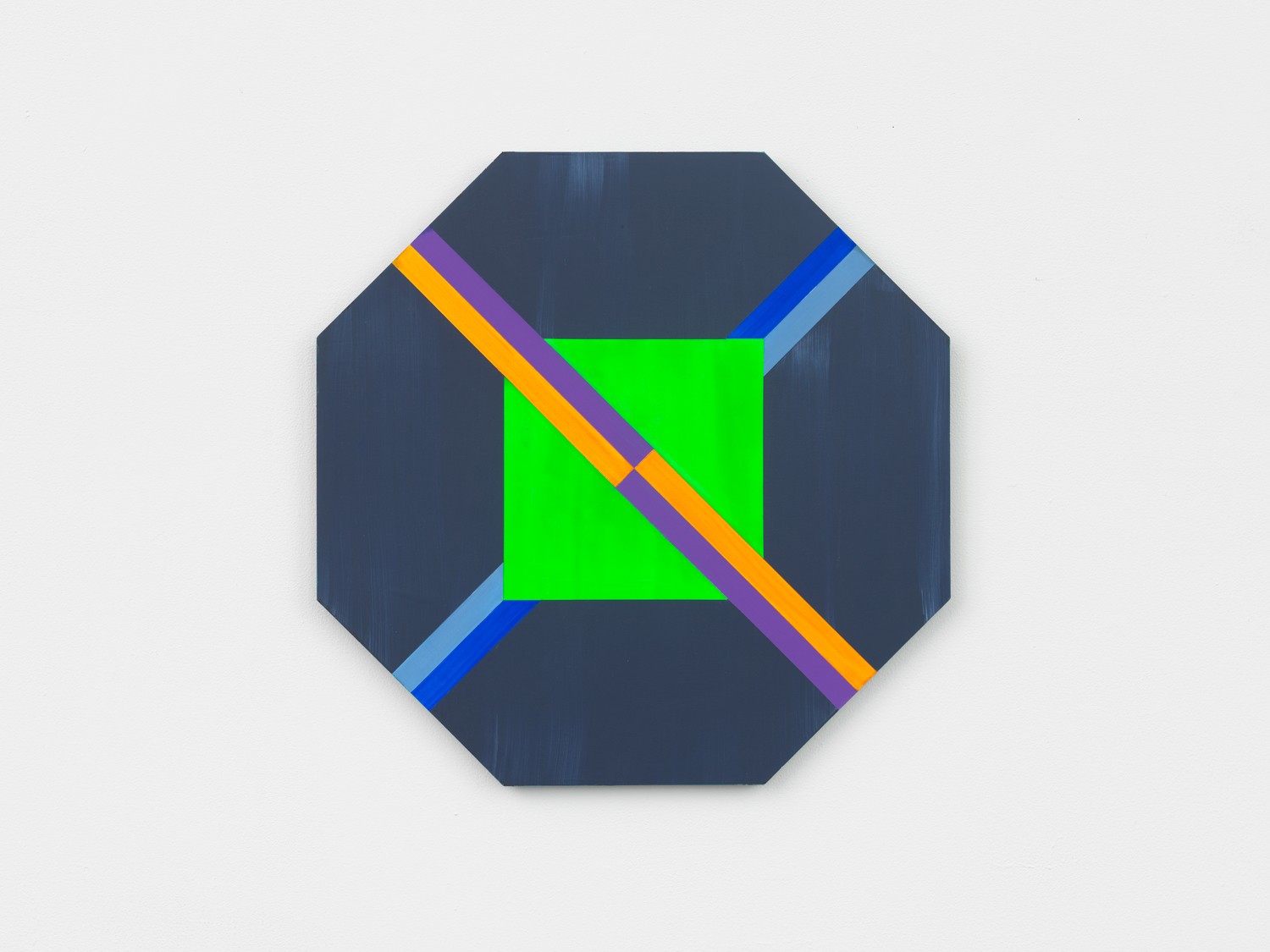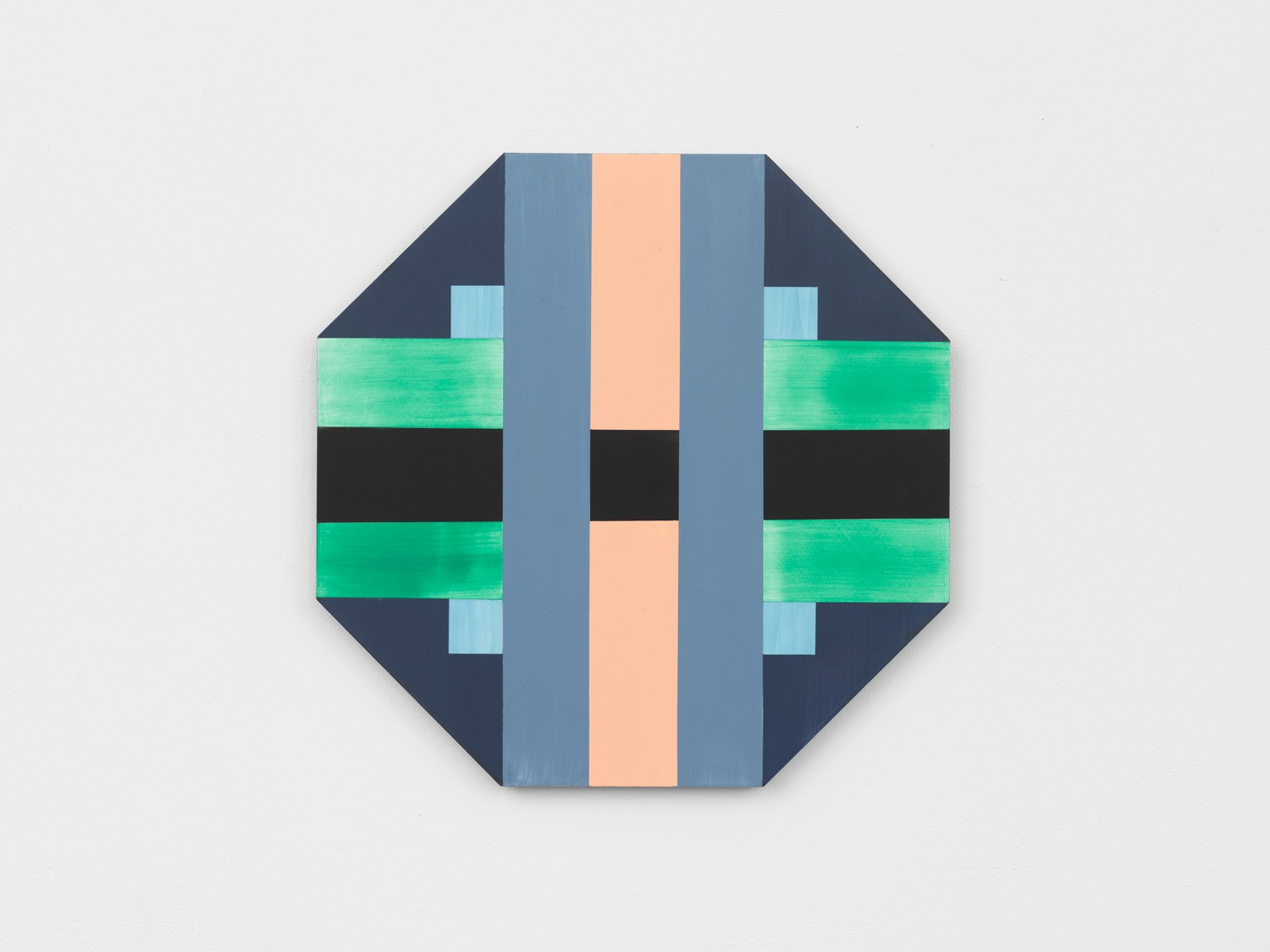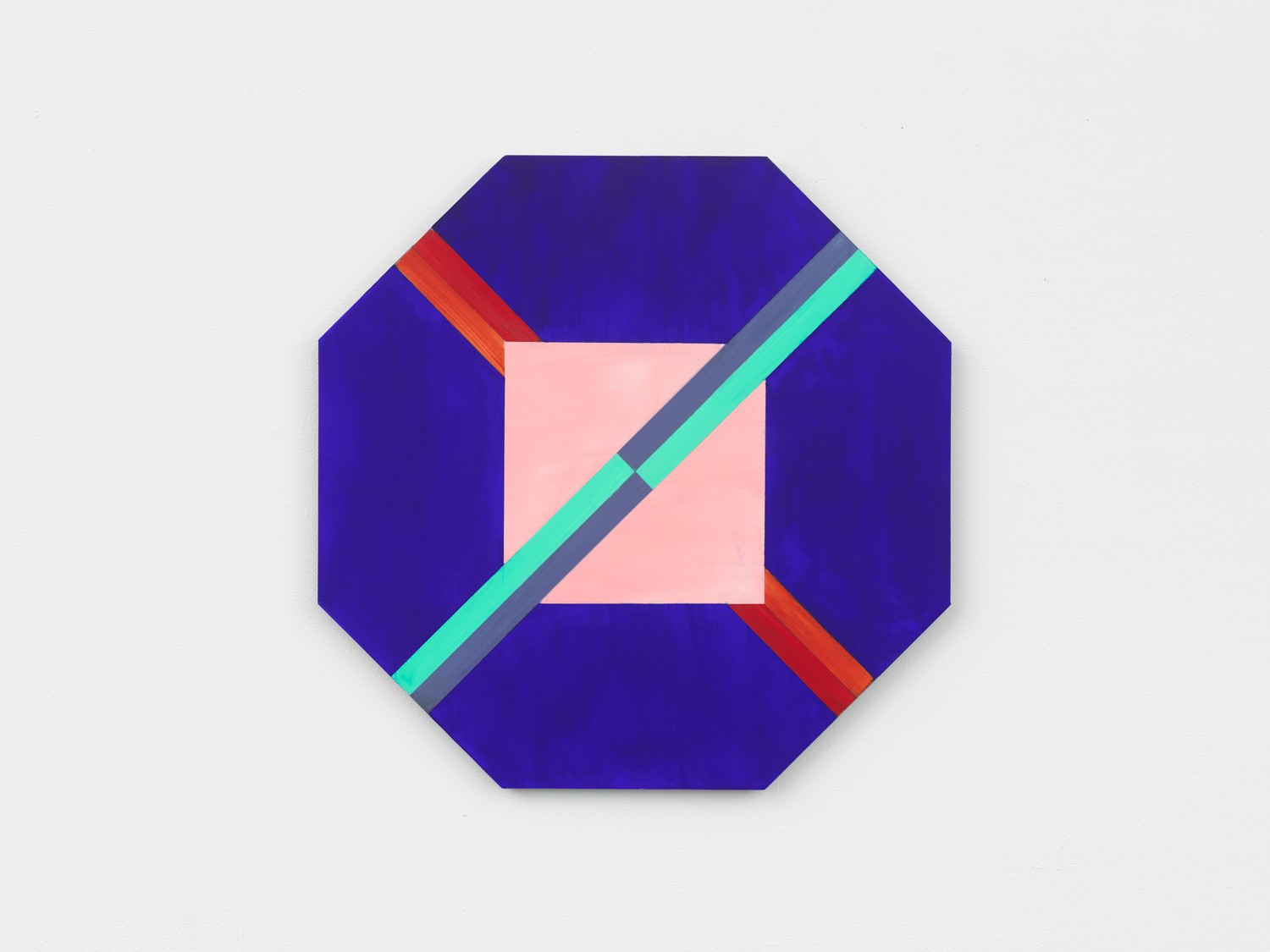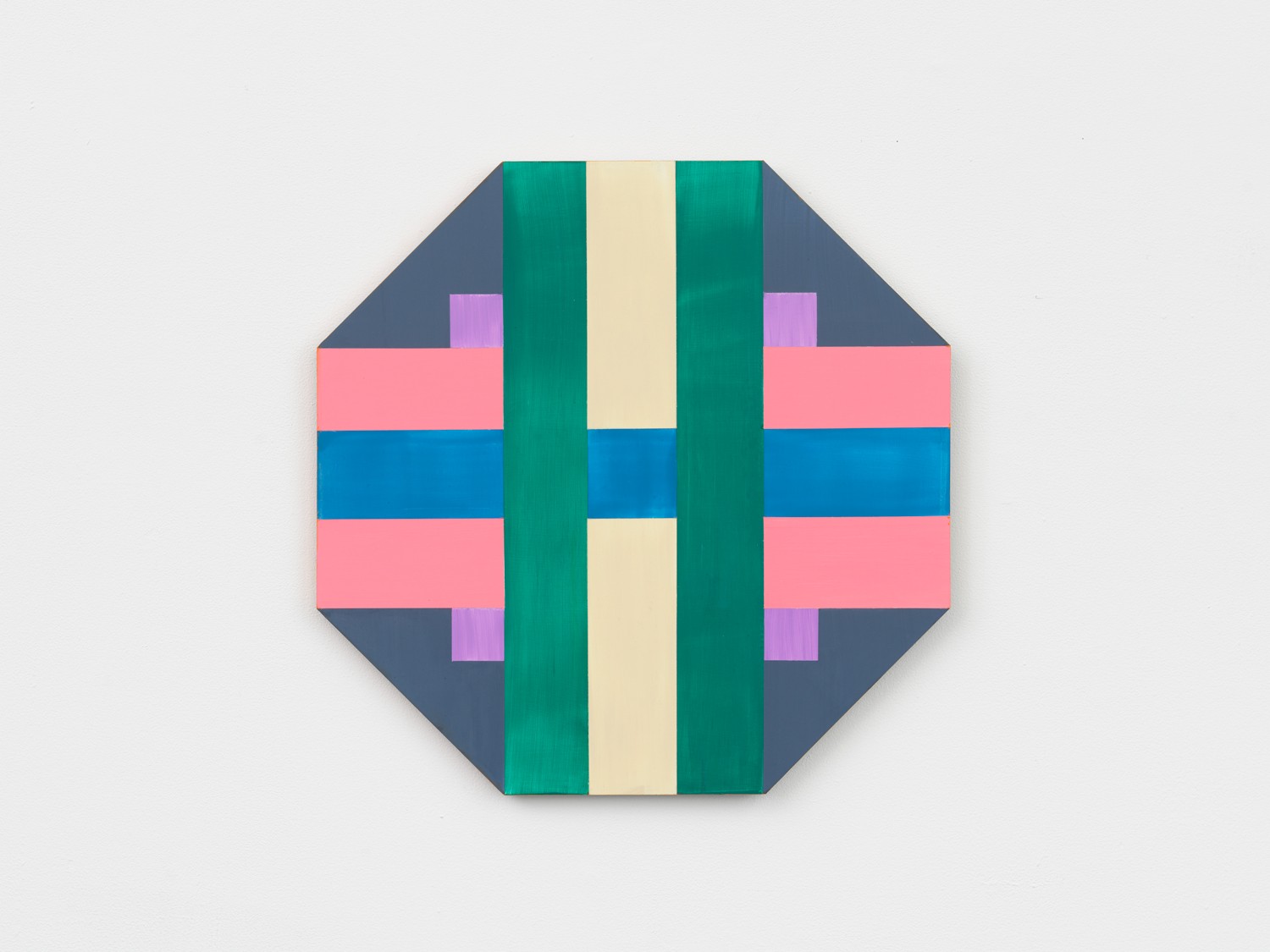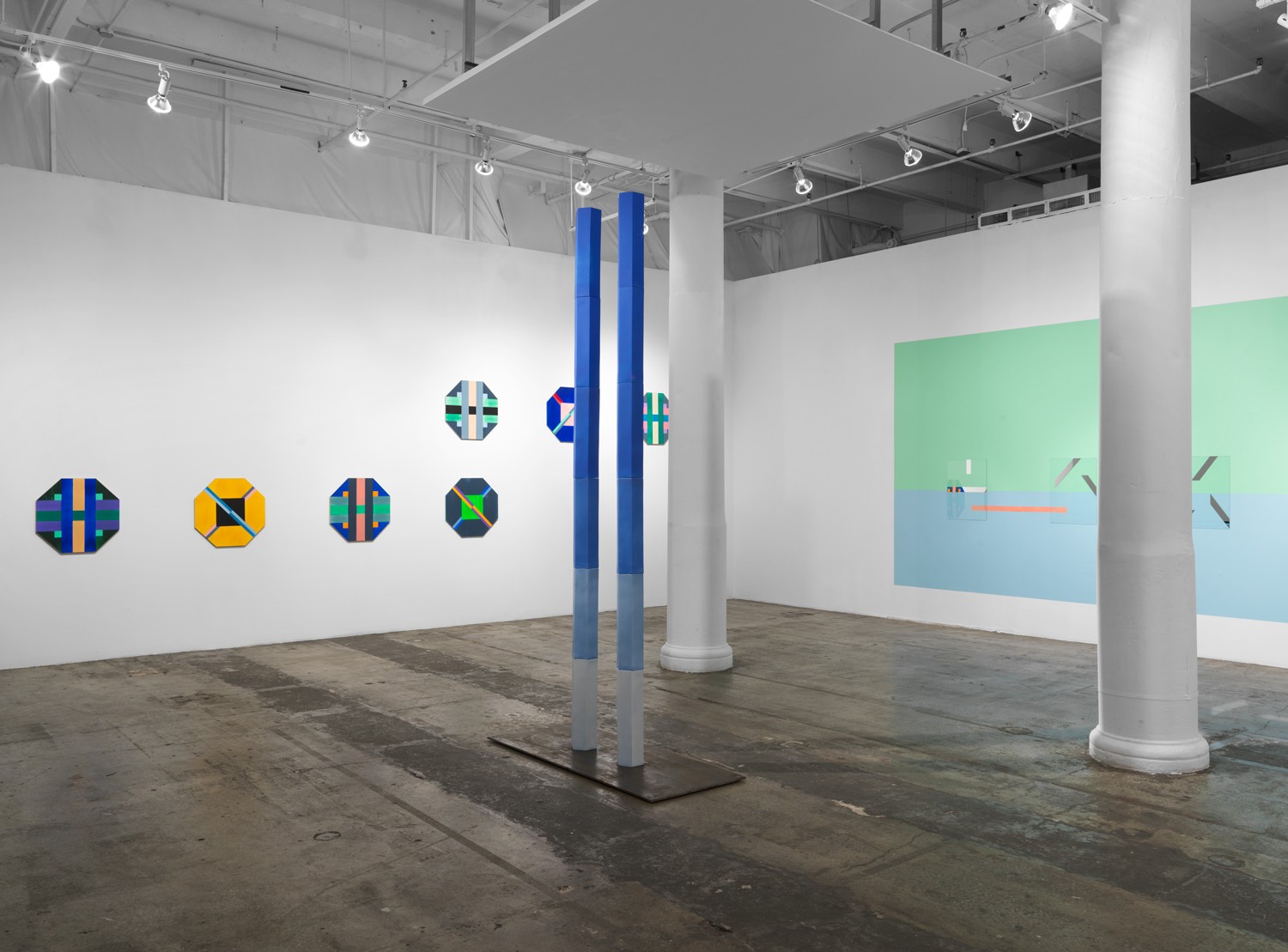Staring and Cursing
at Fridman Gallery, New York / November 14-December 21, 2017
The exhibition investigates the act of viewing as an expanded experience. Ginzburg explores notions of aura, materiality and perspective, bridging Soviet Avant-Garde experiments and methodologies of Western post-war modernism. The exhibition coincides with the 100th anniversary of the Russian Revolution which brought about a radical change in the social and artistic landscape worldwide.
A tall sculpture positioned in the center of the gallery, Sky Columns II (Blue), is formed of two porcelain columns, each of which consists of six blue ceramic modules stacked on top of each other. The gradation of blue, most intense at the top and lightest at the bottom, is reminiscent of ceramic tests of color saturation or photographic exposure tests, and alludes to the transformation of the material (clay) into the illusion of color (sky). Installed in dialog with the gallery’s architecture, the work frames the viewer’s physical experience of space.
The artist’s new ORRA paintings take their cues from the color experiments of Mikhail Matyushin, a leading figure of the Russian avant-garde who worked closely with Malevich in the 1920s. Matyushin attempted to demonstrate that expanding visual sensitivity would enable the discovery of “new organic substance and rhythm in the apprehension of space.” Ginzburg developed the works with pigments and paints prepared in his studio whilst studying the physical and spatial properties of colors and their combinations.
In addition to the ORRA paintings, Ginzburg has created a site-specific mural superimposed with mirrored works on glass. The artist continues to explore the process of dilution and thickening of aura through distance and materiality. These works oscillate between their commodity status and presence as auratic objects — mirrors for projections of ideas and ideologies, imbued with transcendental qualities.
Staring and Cursing reconsiders historical perspectives and spatial relationships, both formally and culturally. Ginzburg questions how history is mediated and searches for insights into intellectual and social influences that affect perception and historical narratives.

